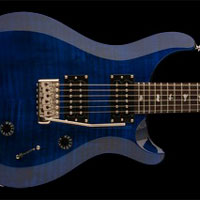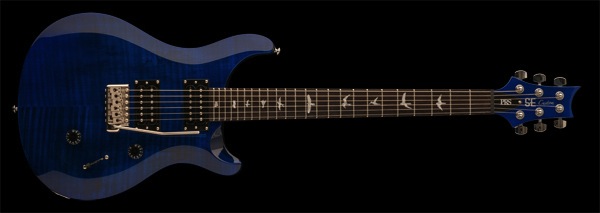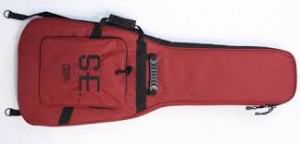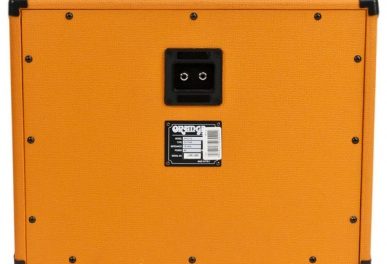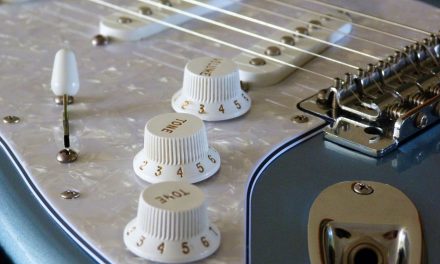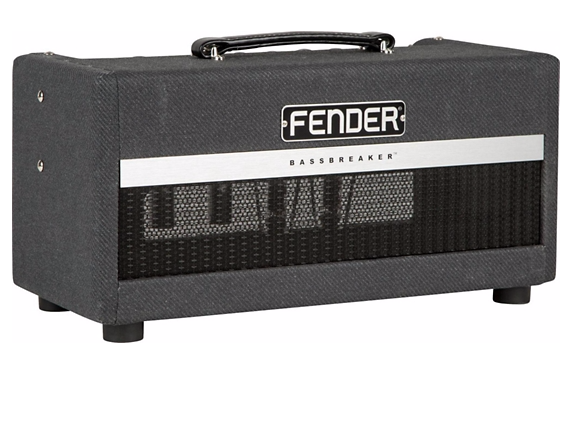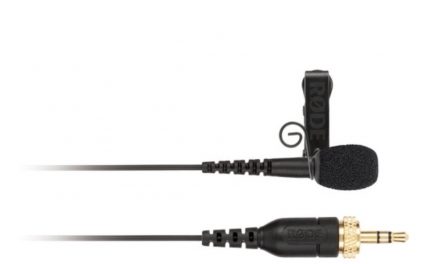Update – You can see this guitar in a video on my YouTube channel. Here it is:
Review.
Yesterday I bought a PRS SE Custom 24 at the crazy low price of $399.99. I’ve seen this guitar available anywhere from $675 to $800. It was one of the Black Friday Doorbusters deal, but I was there the next day and they had a couple left, in the box. I had Stan (my sales guy at Sam Ash #2) open up the first box for me, and the fretboard was funny on one edge – it was a different color wood, so that one went back in the box, and I opened the second box and it was perfect. So that’s the one I bought.
There’s a lesson – never buy a guitar you can’t see first, if at all possible. Quality control on guitars, even non-USA guitars, has gotten a ton better, but wood is still wood and no two guitars can be 100% identical.
I’ve been wanting a PRS SE for years, ever since the first Santana model. The SE guitars are made in Korea by a company called “World Musical Instruments.” It’s based on the American PRS Custom 24, which sells for about $2,700, which falls into the “out of your mind” price range here at Budget Guitarist. They are world class guitars, as good as any on the planet. And at that price, they should be. If you are a professional guitarist who can charge high hourly rates for your services, maybe you buy the American version. But the Korean versions have gotten so good that pro guitarists are buying them.
Pretty
My guitar is what they call “royal blue,” which is a darker blue with flame maple top. The body is mahogany. It has 24 frets, a wide thin neck shape, a maple neck with rosewood fingerboard, and what feels like medium-jumbo frets. Here’s an image, stolen from the PRS website:
It has two humbucker pickups, both of which can be coil-tapped, a vintage style tremolo system, and a three way switch. The tuners and pickups are both listed as “PRS Designed.” The treble pickup is PRS Designed SE HFS Treble, and the bridge pickup is PRS Designed SE Vintage Bass. In other words, these are foreign-made copies of two different American-made PRS pickups, using PRS design and specs. The nut is graphite.
Sound
The coil taps are a really nice touch on this guitar, and they’re pretty quiet, too. Playing with both pickups coil-tapped results in an interesting sound – not a Fender Strat/Tele type sound, but maybe two neighborhoods over from it. The humbuckers are fairly high output and sound very good clean or distorted. A lot of people replace these stock pickups, but at this point in time I don’t feel the need to do that. People also like to replace the tuners with locking tuners, but I’m not going to be using the vibrato much, so I likely won’t be doing that, either. This guitar, to me, does its best work in the “crunch” zone, where you’re not overdriving the living hell out of it – AC/DC would be a good example. For my recordings, I’ll be using it for the crunch.
Feel
Guitar necks are super, super personal in terms of feel. This guitar has the best neck in my meager collection of 8 guitars. It’s wide, but not as wide as my Ibanez shred monster, and it’s narrow, and my hand fits it like a glove. It’s super comfortable. You’d have to judge for yourself, but for me this neck profile is perfect. The guitar is light – not Squier Bullet light, but lighter than my other guitars. The body contour is comfy, and the double cutaway gives easy access to the 24th fret which I never use. Mostly never. This guitar is not as good as the $2,700 American version. But it holds its own with any sub-$1000 guitar that I’ve ever played, and it kills the low end American Les Pauls I’ve tried out.
How?
Obviously the Black Friday price means not much profit for Sam Ash (if any – they might have even lost money on the deal.) Normally you can get this guitar on sale for $650. Is it worth that amount? Yes. Would I have bought it at that price? Nope. Too much money for my budget. So what corners did PRS cut to get the price reasonable? Labor, for one. Labor in Korea is less expensive than in the USA.
Wood quality is another – all wood used by PRS is rated. The very, very best wood is hand-selected for the super high-end PRS guitars. The high-rated wood is used on the American models, and the wood that is selected for the Korean models is not as high quality. Also, the Korean versions will use a larger number of wood pieces glued together, and the American versions will use fewer pieces.
In the past, most SE guitars had flat tops, whereas the American versions had arched tops. But this guitar has a semi-arched top – I’m sure there’s a technical name for it. It’s not as pronounced as the American version, but it’s good-looking, as you can see in the picture. The flame top is another area where PRS saves money on the SE version – instead of using higher quality maple tops, they use a lower quality maple top and then add a higher quality maple veneer. Normally you think of a veneer is a sticker with a wood pattern printed on it, but in this case it’s actually real wood, but cut to be super, super thin. By doing this, PRS can give customers the same flame top look for a much smaller cost.
The pickups and tuners and nut and bridge are all less expensive parts, but that doesn’t mean they’re bad. The graphite nut on this guitar is far superior to the plastic nut that comes on the Standard Telecaster or Stratocaster, which are plastic. The Standard series is Fender’s version of lower cost alternatives – they’re made in Mexico instead of the USA.
So with all of those lower-cost parts, how good is this thing? Very good, actually, because the Korean craftsmen who make this guitar are very, very skilled, and that’s the most important factor. The vintage vibrato bridge is superior to any of the Fender Standard guitars. The fret job is amazing – it’s the quality of work you’d expect from an American Fender or Gibson. The setup was very good – good enough that I didn’t have to touch it, which is amazing – I’ve never bought an electric that I didn’t have to set up myself. The care and workmanship that went into this guitar is obvious, and something that PRS demands. They don’t want their name associated with junk. I do wonder how the first guitar we looked at slipped through – the neck issue was purely cosmetic, but this guitar is a stunner, so I’m surprised it made the grade.
Finish also matters – a more expensive finishing process, which is what American PRS guitars undergo, can lead to a better-sounding guitar. Less expensive guitars that use a cheaper, heavier finish can dull the sound a bit.
Here’s the dark secret of electric guitars – every component in the guitar contributes to the sound, but some things are very, very subtle – in the case of the grade of the wood, you can pay triple for a higher-graded wood that will not sound 3 times as good. The feel of the neck and body, the sound of the pickups, and the quality of the workmanship are the most important factors in general. The American version costs 4 times more than the SE version, but does not sound 4 times better. And here’s the other dark secret – if you have a ton of overdrive on your sound, the differences in guitar sounds shrink even more, to the point where the average person can’t tell the difference.
Bag (Added on 12/6)
Forgot to mention – the guitar came with a super awesome gig bag. Looks like this:
Summary
At $399, this guitar is a no-brainer purchase. It’s a stunning value, and you could wait 4 months and then sell it for more than you paid. At the more traditional price of $650 to $750, it’s a good guitar that can hold its own with the other entries. However, I’m not a big fan of that price point. Gibson’s offerings for around $750 have major compromises, Fender American doesn’t really have anything in that range except for one natural finish Strat, and Epiphone and Fender Mexico have super deluxe models in that range that are basically $450 guitars with a lot of extra upgrades. Once you go over the magical $1,000 mark, you can find some outstanding guitars such as the American Strats and the Gibson Les Paul Studio.
And of course all of that is just my opinion. YMMV.
UPDATE, 4/29/17
After owning this guitar for 3 and a half years, I still love it. But I have done some things to it. I rolled the edges of the fretboard for a more comfy feel, I replaced the tuners with locking grovers, and I replaced the bridge position pickup with a Seymour Duncan Pearly Gates. Big difference – the Pearly Gates is my favorite guitar pickup in the world right now. It’s a noticeable improvement over the stock pickup. I may upgrade the saddles at some point, and I may upgrade the nut, but the biggest change was the pickup.
UPDATE, 5/30/20
Now I’ve REALLY owned it a while, and I do still love it. It’s one of my top three favorite guitars from my collection. Of course, I do spend more time playing my PRS S2 Satin 24. But I do still play the SE.

